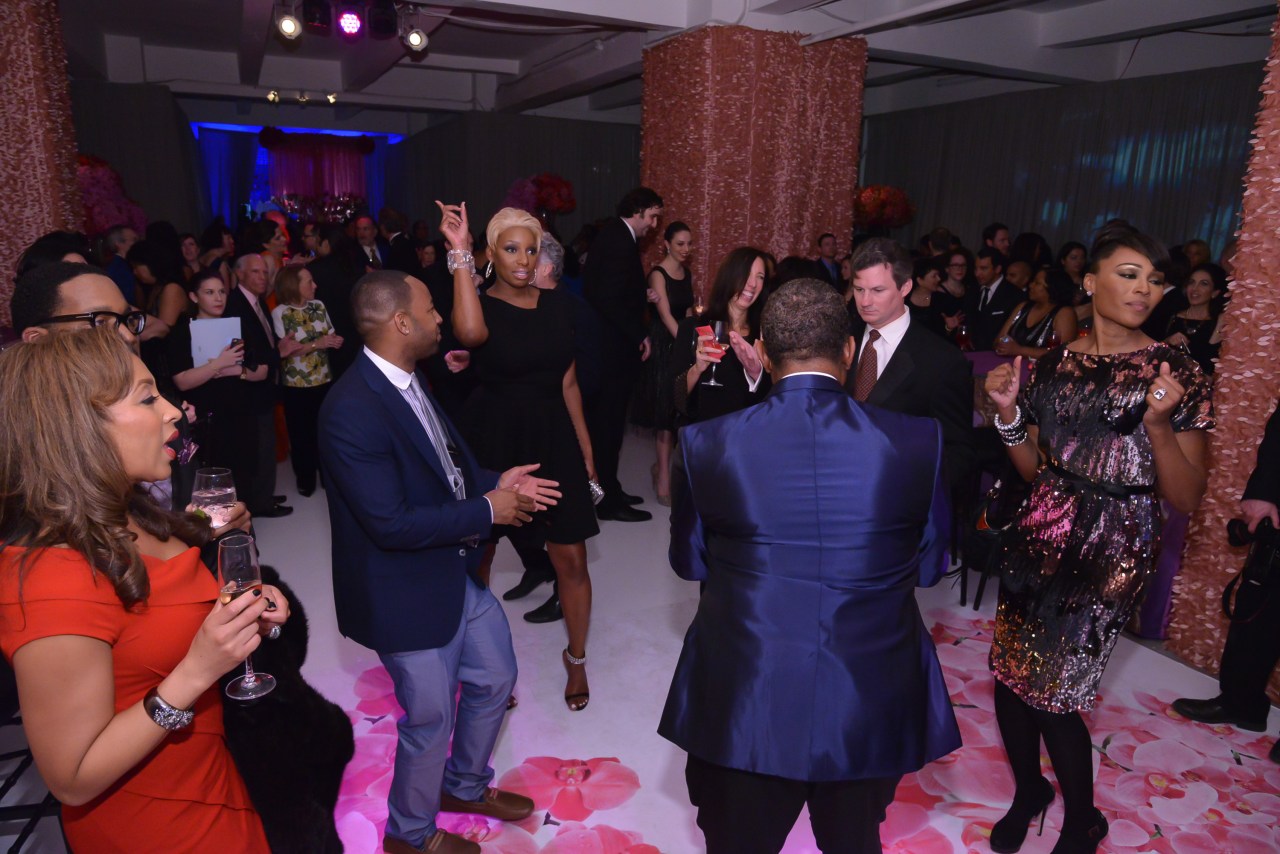When Gay Couples Get Married, Are They Staying Monogamous?
As I stood in my underwear and a headpiece made from stockings, “Betty,” a six-foot drag queen with a red bob that matched her thigh-high boots, spent two hours grooming me into the sparkliest Cleopatra-clone possible. And then I got up on stage at Lucky Cheng’s cabaret in New York City, and officiated the marriage…


As I stood in my underwear and a headpiece made from stockings, “Betty,” a six-foot drag queen with a red bob that matched her thigh-high boots, spent two hours grooming me into the sparkliest Cleopatra-clone possible. And then I got up on stage at Lucky Cheng’s cabaret in New York City, and officiated the marriage of Eduardo Chan and Israel Hornedo.
Chan and Hornedo had contacted me the month prior after reading a story I’d written about wanting to oversee same-sex marriages once they were legal in New York. As soon as I agreed to marry them, the couple began planning their big day.
The event was laced with standard wedding components: emotional toasts, embarrassing stories told by tipsy friends, cake-cutting and first dances. But there were also penis-shaped balloons, transvestite servers and outrageously dirty jokes.
After the last tequila shots had been downed, I wondered whether Chan and Hornedo’s union would mimic their ceremony in all of its unique glory, or whether they would live by traditional doctrines of marriage—namely, monogamy.
Straight people interested in family building are encouraged by society to find love, marry (especially if they’re knocked up already), cohabitate, reproduce, and strive to be faithful for all eternity. But such a relationship blueprint—which, for most straight people, has been ingrained since childhood—does not exist for gays and lesbians.
Now that nine U.S. states have legalized same-sex marriage, President Obama has evolved into an overt supporter of LGBT rights, and Bill Clinton has renounced the infamous Defense of Marriage Act, matrimony is getting a much-needed overhaul. Still, we’re left with a question: because same-sex marriage has been forbidden for so long, there are no established social norms defining it. So as the institution widely considered the cornerstone of American family life evolves, are same-sex couples adopting monogamy, or are they creating their own rules?
Though I reached out to equal numbers of lesbian and gay couples, nearly all of those willing to speak to me about their sex lives were men. Of the gay men I interviewed, all of them considered non-monogamy and monogamy equally valid relationship constructs, no matter which one they followed.
Theo Bleckmann, a 46-year-old New York musician who married his partner of seven years on Valentine’s Day at the Empire State Building (in case you think it couldn’t get any awesomer, Joan Rivers officiated), says that he and his partner are “of course” monogamous. But while most of the gay couples Bleckmann knows are also sexually exclusive, he thinks that “gay couples overall figure out the parameters of their sexual boundaries and behavior as they see fit, a lot more so than married straight couples.”
Chan and Hornedo, still happily married, believe monogamy is “the only healthy channel for a long-lasting, fulfilling relationship.” But they are quick to add that they “are open-minded” about it.
Lanz Lowan, who has an M.S. in psychology and serves on the faculty at Stanford’s business school, has been in a relationship with Blake Spears, the founder of Insight Healthcare, for 37 years. Both in their 60s, the two have been non-monogamous since six-months into their relationship. Inspired by their experience, Lowan and Spears even conducted a study in 2010: “Beyond Monogamy: Lessons from Long-term Male Couples in Non-Monogamous Relationships.” The two interviewed 86 couples (roughly half were married) over the course of four years about their sexual exclusivity, and concluded that “sanctioned outside-sex is a sustainable and satisfying possibility.”
But what does an open gay marriage look like, and how does it work?
For Lowan and Spears, non-monogamy has taken different shapes over the years. “Sometimes, we’ve been involved with an outside partner together, sometimes only separately.” And while some of their additional partners have been strangers encountered at bathhouses, they’ve also incorporated friends. No matter what, Lowan and Spears emphasize that they’ve maintained a strong sex life with each other at all times.
Among other couples they interviewed, the rules varied from: “If you bring him home and he’s cute, you have to let me join,” to “You can fuck whomever you want, but you can’t take him to dinner,” to “The Sauna Clause: Sex at the gym doesn’t count.”
Lowan and Spears think that male biology is partly responsible for the success of an open gay marriage. “Men have a prehistoric proclivity toward procreation with multiple partners,” says Spears. “So you have two people coming from the same evolutionary path. I believe that men, together, are somewhat better equipped to handle non-monogamy.”
This is consistent with the findings of Pepper Schwartz, Ph.D. and James Witte, Ph.D. who collected data from 100,000 respondents for their book The Normal Bar: The Surprising Secrets of Happy Couples and What They Reveal About Creating a New Normal in Your Relationship. They report:
About half of all gay male couples in America allow infidelity based on the rules the couple negotiates together. While this is incomprehensible to many people in heterosexual and lesbian relationships…many of these couples seem to be able to maintain long-term, highly committed, and happy relationships without being monogamous.
But while maleness may enable non-monogamous marriage—and facilitate the explosive popularity of the all-male location-based social network/ hook-up forum that is Grindr—it may not be the most defining element of these relationships. The rules governing non-monogamy vary widely, but Lowan and Spears point to two common factors in those that thrive: honesty and communication. “If a couple is willing to be forthright and to problem-solve as needed, non-monogamy isn’t by nature de-stabilizing.”
Of course, communication means talking – hashing out the rules, each person’s boundaries, and how to navigate the looming threat of jealousy. For instance, one Beyond Monogamy participant, Mitch, agreed with partner Steven never to say, “I love you” to anyone else. Whenever Mitch or Steven senses that the other is too infatuated with an outsider, they have a conversation about it. The clearer and more extensive the set of rules (about when and how to approach alternate sex partners, which sex acts are permissible, how threesomes are orchestrated, etc.), the easier it is to protect your relationship.
And as it happens, gays may be better positioned to master the communication skills required for healthy non-monogamy than their straight peers, precisely because they haven’t grown up with hardened social paradigms.
According to gay issues specialist Phil Socci, LCSW, because most gay people haven’t grown up with ideas of what a gay relationship “should” look like, they’re forced “to learn from the ground up.” This learning curve means constant questioning, just as the process of coming to terms with being gay tends to. The rewards of reflection can be elevated self-awareness and, by extension, better skills with self-expression. “There is a different level of comfort in gay relationships in terms of communicating what they want—especially sexually,” says Socci.
“A case could be made that a life that has some kind of a resistance is a life more examined,” he says.
Lisa Sherman, Executive Vice President and General Manager at LOGO — who speaks from her own experience as a lesbian and from what she knows about her network’s audience — asserts that the lack of rights granted to same-sex couples forces them to approach a relationship more thoughtfully than their straight counterparts. Because everything (finances, healthcare, childrearing, etc.) becomes more complicated for couples with fewer freedoms, she says, “you have to be so much more thoughtful about how you go about the relationship.” As a result, “the intention is so much more specific and clear and it is much more intentional.”
For now, maybe the question isn’t whether gay couples are choosing to model their marriages as straights do, but whether the same-sex community stands to lose anything as their way of life is normalized.
Already, we know that growing numbers of same-sex couples are dealing with divorce, just one of the relationship issues that impacts heterosexuals. It could be that gays and lesbians are destined to join the throngs fielding when-the-hell-are-you-going-to-get-married? jabs from relatives. They might also start to feel pressured into finding love by a certain age, or refraining from cohabitation pre-engagement.
Most importantly, it could be that the mindful communication so many gays and lesbians have come to embrace—a consequence of existing outside the bounds of established norms for so long—evaporates in the face of widespread acceptance. That’s something to worry about down the line. But as it stands, straight couples have plenty to learn from gays about what makes a marriage, or any longterm relationship, truly work. ![]()
This post originally appeared on HowAboutWe.
Read more from HowAboutWe:




